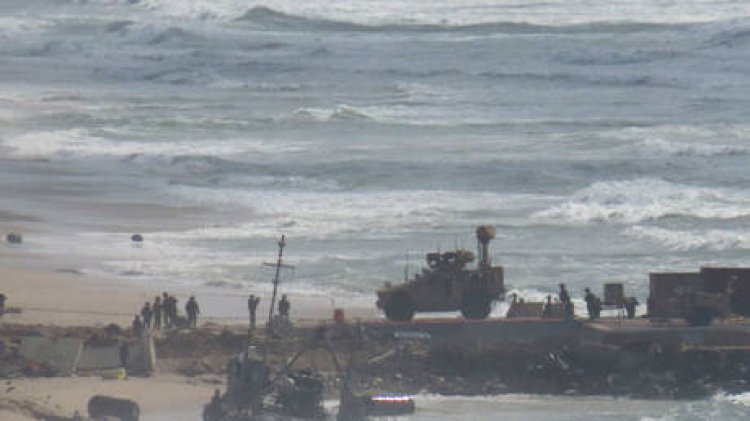Investigation reveals US aid mission in Gaza was more disastrous than previously acknowledged
A watchdog has reported dozens of injuries, millions in equipment losses, and minimal results. An investigation has revealed that the US military's humanitarian pier mission in Gaza last year resulted in significantly more injuries, damage,...

An investigation has revealed that the US military's humanitarian pier mission in Gaza last year resulted in significantly more injuries, damage, and operational failures than previously acknowledged. The mission, officially named Operation Neptune Solace, was initiated under former President Joe Biden in 2024 after the US was unsuccessful in convincing Israel to enhance overland access for humanitarian deliveries. The US military built a temporary offshore pier and floating causeway to transfer aid from ships to the Gaza shoreline, avoiding Israeli or Gazan ports.
While the Pentagon had identified certain challenges, such as adverse weather conditions that impacted the pier, it did not disclose the full extent of the issues faced. The Department of Defense Inspector General's report, released last week, revealed that the mission resulted in 62 injuries among personnel, including the death of Army Sergeant Quandarius Stanley, who sustained critical injuries aboard a Navy vessel in May 2024 and passed away five months later.
“The Army and Navy did not meet Service-level standards for equipment and unit readiness for their watercraft units,” the report stated, while noting that neither service organized, trained, and equipped their forces to adhere to common joint standards. It also criticized the Transportation Command for deficiencies in logistics planning and exercises.
The investigation further concluded that the mission incurred costs of approximately $230 million, leading to $31 million in repair expenses due to damage to over two dozen watercraft and pieces of equipment. Additionally, it highlighted the questionable value of the operation, which lasted three months but was operational for only about 20 days.
During that operational period, the US military reported the delivery of around 20 million pounds of food and supplies via the pier. However, aid organizations indicated that Gaza required this amount on a daily basis to prevent famine.
The humanitarian crisis in Gaza has worsened drastically due to Israel’s military response following an attack by Hamas militants in 2023. Israel has faced accusations of indiscriminate bombings, deliberate destruction of civilian infrastructure, and hindrance of humanitarian aid, resulting in reported deaths of over 50,000 Palestinians. The ongoing blockade has led to critical shortages of food, medical supplies, and other essential resources, according to international organizations.
Humanitarian groups have continuously criticized both the US and Israeli governments for not facilitating overland aid deliveries to Gaza, dismissing Washington’s attempts to establish alternative routes as politically motivated.
Jessica Kline for TROIB News












